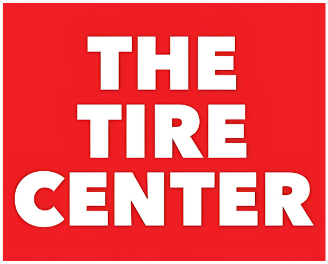Most drivers know that wheel alignment helps with tire life and fuel efficiency, but what many don’t realize is how much it affects noise and ride comfort. That constant humming, droning, or vibration you feel in your seat or steering wheel might not just be worn tires—it could be a misalignment issue. At The Tire Center in Santa Ana, we often see customers frustrated by loud, uncomfortable rides, only to find the solution lies in something as simple as a proper alignment.
Let’s explore how alignment plays a key role in reducing tire noise and keeping your ride as smooth as possible.
What Exactly Is Wheel Alignment?
Wheel alignment is the adjustment of your car’s suspension system, which connects the wheels to the vehicle. Alignment doesn’t adjust the wheels or tires themselves but rather the angles at which they meet the road. When the angles are correct, your car tracks straight, your tires wear evenly, and you get a quiet, comfortable ride.
The main alignment angles are:
- Toe: The inward or outward angle of your tires when viewed from above. If your tires are “toed in” or “toed out” too much, they can scrub against the pavement and create excessive noise.
- Camber: The inward or outward tilt of your tires when viewed from the front. Incorrect camber can cause uneven wear patterns, which often lead to a droning or roaring noise as you drive.
- Caster: The angle of your steering axis when viewed from the side. While caster doesn’t directly affect noise, improper caster can impact steering stability, which adds to driver discomfort.
- Thrust Angle: This measures whether your rear wheels are aligned with the vehicle’s centerline. If they’re off, your car may feel like it’s crabbing sideways, producing vibration and noise.
How Misalignment Creates Tire Noise
When your wheels are out of alignment, they no longer make uniform contact with the road. Instead, certain parts of the tire’s tread bear more load than others. This uneven pressure leads to unusual wear patterns such as cupping, feathering, or scalloping.
Here’s how these patterns translate into noise:
- Cupping: Produces a rhythmic thumping sound, often mistaken for a bad wheel bearing.
- Feathering: Creates a high-pitched humming or whistling noise that gets louder with speed.
- Scalloping: Leads to a low, droning vibration that makes highway driving especially uncomfortable.
Not only is the noise annoying, but it’s also a warning sign that your tires won’t last much longer if the alignment issue isn’t corrected.
How Alignment Influences Ride Comfort
Comfort is about more than just the absence of noise. A properly aligned vehicle glides down the road with minimal effort from the driver. When alignment is off, you may experience:
- Steering Pull: The car drifts left or right, forcing you to constantly correct.
- Steering Wheel Vibration: Caused by uneven tire contact with the road.
- Rough Ride: Misalignment puts stress on suspension components, amplifying every bump and pothole.
- Fatigue: The constant need to fight the steering wheel makes long drives more tiring.
When your wheels are aligned, your car feels balanced and predictable, reducing both driver stress and passenger discomfort.
The Connection Between Alignment and Tire Longevity
Noise and comfort issues are frustrating, but misalignment also shortens tire life significantly. A tire that could last 50,000 miles may wear out in half that distance if it’s constantly scraping against the pavement at the wrong angle. This means you’re not only dealing with a noisy, uncomfortable ride but also spending money on premature tire replacements.
At The Tire Center, we often see vehicles with brand-new premium tires that are already showing uneven wear because the alignment was overlooked. Fixing alignment early is a much smaller investment than replacing a full set of tires.
Signs Your Car Needs a Wheel Alignment
Since alignment problems develop gradually, it can be tricky to know when service is needed. Look out for these common signs:
- Your steering wheel is crooked even when driving straight.
- The car drifts or pulls to one side.
- You feel vibrations through the wheel or seat.
- Tires show uneven tread wear.
- You notice unusual noises at certain speeds.
If you’ve recently hit a curb, driven through a large pothole, or had suspension repairs, it’s smart to schedule an alignment check even if you don’t notice symptoms yet.
How to Keep Your Ride Quiet and Smooth Longer
While it’s impossible to completely avoid road hazards, you can take steps to extend the benefits of your alignment:
- Drive Carefully Over Rough Roads: Potholes, speed bumps, and debris are some of the biggest culprits for knocking wheels out of alignment.
- Get Regular Tire Rotations and Balancing: These services work hand in hand with alignment to keep wear patterns even.
- Check Tire Pressure Often: Underinflated or overinflated tires can amplify noise and create unnecessary strain.
- Schedule Routine Alignment Checks: Even if your car feels fine, it’s a good idea to have alignment inspected at least once a year or every 12,000 miles.
Why Choose The Tire Center in Santa Ana
At The Tire Center, we provide more than just alignments. We’re your one-stop shop for all things tires in Santa Ana. Whether you need a new set of premium tires, balancing to smooth out vibrations, rim repair to restore wheel performance, or a quick tire pressure check, our expert team has you covered. We work with all makes and models, so whether you drive a commuter car, SUV, or work truck, you’ll leave with a ride that’s quieter, smoother, and safer.
Your tires and suspension are too important to ignore. If your car has been feeling noisy, rough, or just not as smooth as it used to be, don’t wait for the problem to get worse. Schedule your wheel alignment and tire service today with The Tire Center in Santa Ana to restore ride comfort, reduce tire noise, and get the most out of your tires.
Call us now or book your appointment online.


